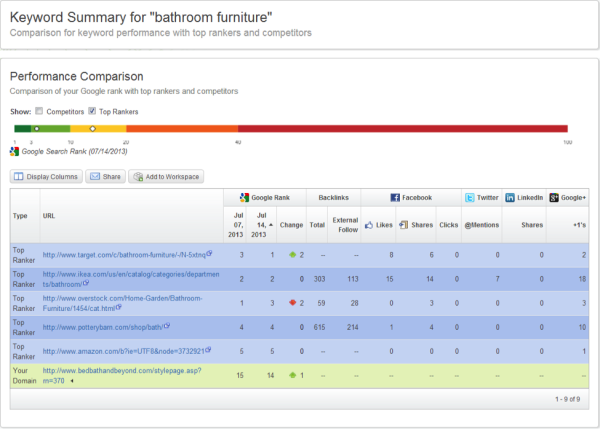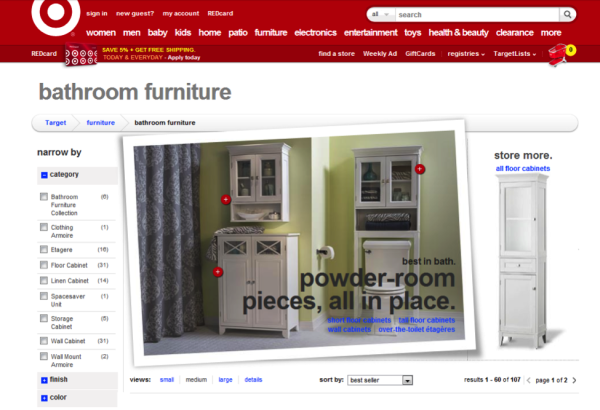3 Simple & Beneficial Competitive Analysis Strategies
As an approach, focusing exclusively on one’s own efforts is not without merit. But looking up and taking in your surroundings in the SERPs can have both strategic and tactical benefits.
The insight that can theoretically be derived from a competitive analysis process can fill volumes, but I’m going to focus on three specific angles outlined below.
1. Discover If Your Competition Is Really Your Competition
Before you even get started digging into the nitty gritty details of what your competition is doing, it pays to start by checking your assumptions of who you consider to be your competitors.
For example, at Conductor, we’ve encountered more than one occasion where a brick-and-mortar retail store insisted their competitors were X, Y, and Z (because they primarily compete with them in the brick-and-mortar world), only to have us show them the online retailers that consistently show up at the top of SERPs for the queries they care about are actually A, B, and C.

Once you’ve nailed down your primary competitors, consider taking the next step by analyzing their product lines (particularly if you have a number of different product lines).
For example, the image below shows that “Acme Online Retailer” has very different competition in the furniture industry than it does in the apparel industry. Knowing this creates a tactical advantage in the SERPs and can guide both future strategy and tactics in both verticals.

2. Discover How Others Think About Your Industry
Analysis of competitors can reveal things like backlink profiles and on-page optimization strategies, sure. But it can also show you how other industry experts think about and organize their products.
For example, by looking closely at how Target organizes their bathroom furniture, an online furniture retailer can get ideas about how to categorize the products on their site. This matters because site taxonomy can influence how search spiders interpret and present your site in the search listings, and can even impact search rankings.

3. Discover Content & Presentation Ideas
Paying even a small amount of mindshare to what your competition is doing with their content can pay significant dividends. Competitors can give you excellent insight about how to create and present content in your industry.
Let’s take a look at another one of Acme Furniture’s competitors, IKEA:
The top portion of the page reveals well laid-out, informative content intended to help the purchaser make a decision and encourage them to think about other potential home improvements.
The bottom portion of the page reveals a tasteful, non-pushy call-to-action.
This well-presented, informative page without a pushy sales pitch may ultimately explain why it is ranking above Acme’s own page — both because visitors researching bathroom furniture link and share to it and because, in a post-Hummingbird world, Google has continuously improved on identifying useful content.
Acme’s taking the time to analyze their competitors’ presentation of content can help them to take steps to adapt their own content to achieve similar success.
Give Some Mindshare To Competitive Analysis
You certainly need to focus on your own performance in the search results, but spending just a little time with competitive analysis may actually make that easier and more efficient. Think of it this way: your competitors have been spending time and resources on figuring out how to sell a product that’s similar to yours.
A strategic analysis can allow you to reap some of those benefits. So, if you are not currently giving any mindshare to competitive analysis, consider if some of the techniques outlined above can offer you valuable strategic and tactical insight.
